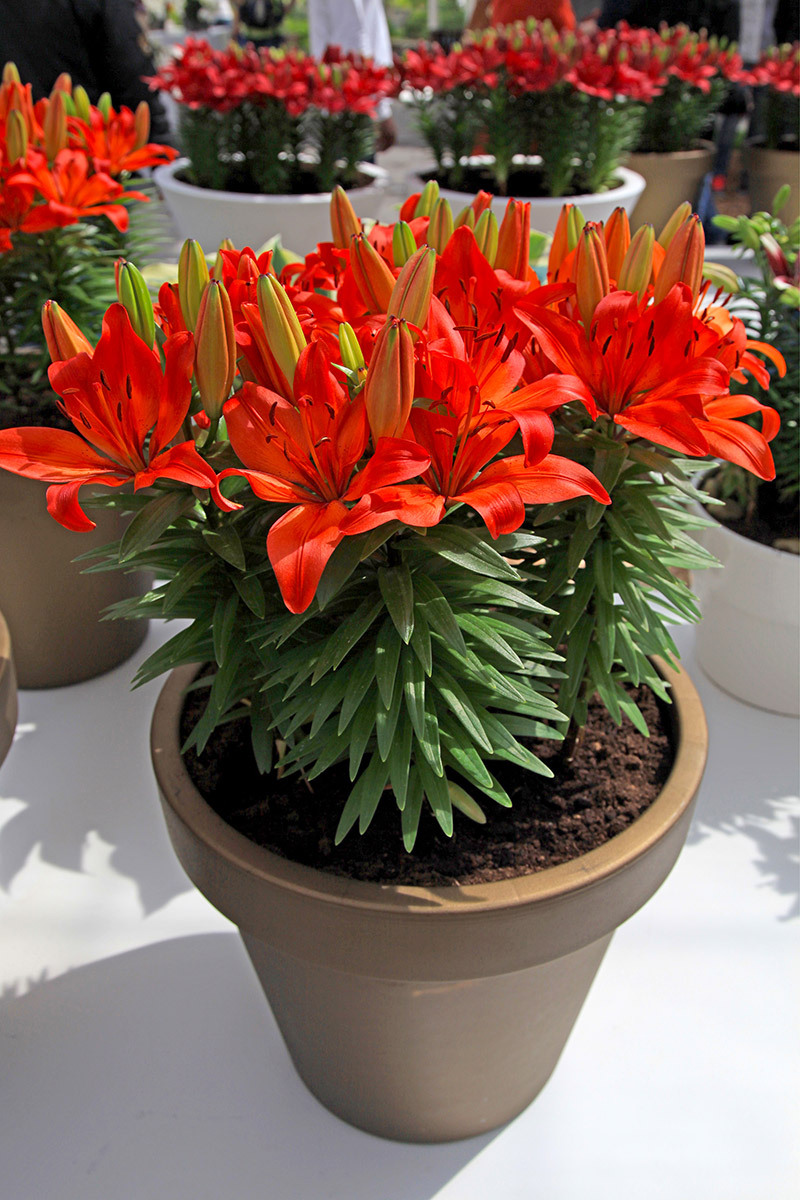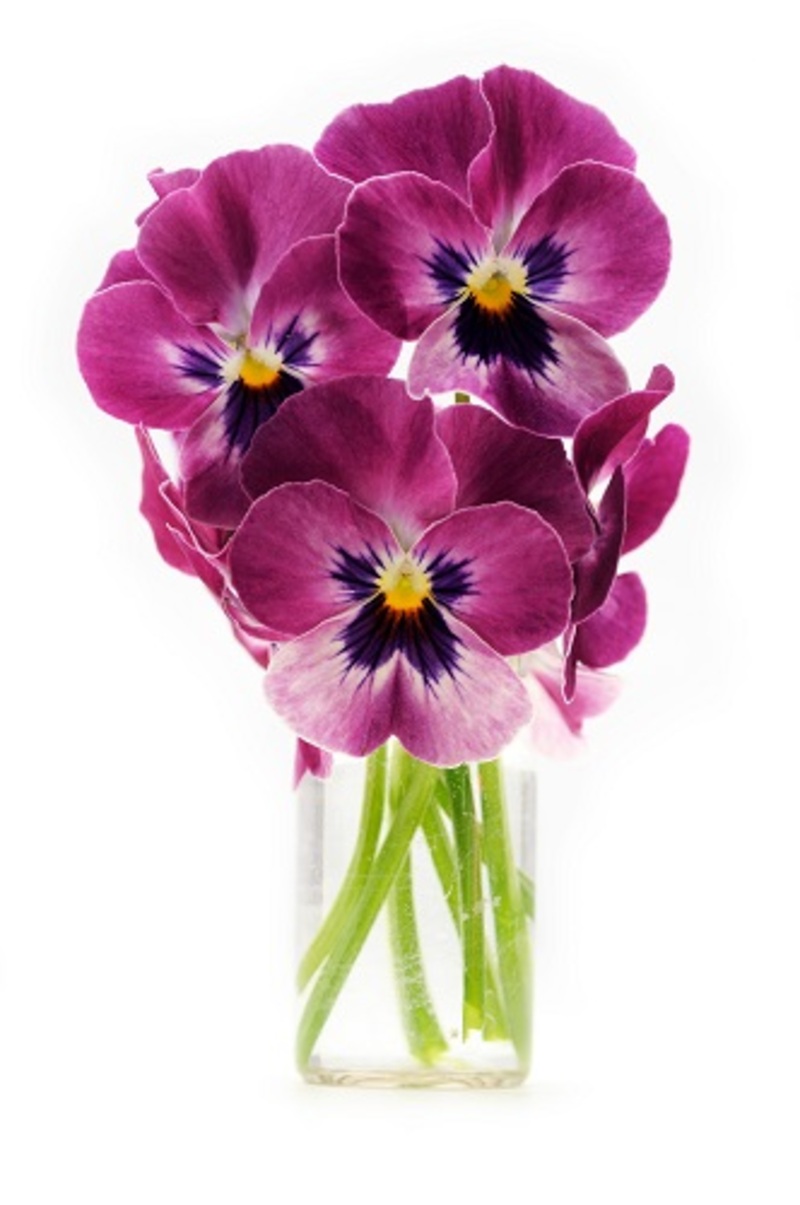Achieve Longer Lasting Blooms with These 3 Easy Methods
Posted on 13/08/2025
Achieve Longer Lasting Blooms with These 3 Easy Methods
There's nothing quite like the beauty and joy of fresh blooms gracing your garden or brightening up your home. However, keeping flowers looking vibrant and healthy for as long as possible can sometimes feel challenging. The good news is that achieving longer-lasting blooms isn't as hard as you might think! In this comprehensive guide, we'll introduce you to three simple, effective methods that help extend the life of your flowers, whether in your garden beds or in a vase on your table.
Why Longer Lasting Blooms Matter
Blooms that last longer aren't just visually pleasing; they also offer a range of benefits:
- Reduced maintenance: The less often you need to replant or replace flowers, the less work you need to do.
- Better pollinator support: Longer lasting flowers attract bees, butterflies, and other beneficial insects for a greater period.
- More value for money: With cut flowers, more vase life means you get more enjoyment from your purchase.
- Enhanced curb appeal: Your garden or home remains colorful, lively, and attractive for extended stretches.

Unlocking the Secret: How to Extend Flower Lifespan
If you've ever wondered how to keep your blooms fresh for longer or how to maximize the flowering season in your garden, these three methods have you covered. Let's explore each one and discover how you can achieve longer lasting blooms with ease!
Method 1: Proper Watering Techniques
The Foundation of Healthy, Long-Lasting Flowers
Water is at the heart of plant survival, but improper watering is a major culprit for short-lived flowers. Overwatering can cause root rot and stem problems, while underwatering leads to wilting and a shortened bloom cycle. Here's how to master the art of watering your plants for longer lasting flowers:
- Water at the Base: Direct water at the base of plants, rather than overhead. This minimizes fungal issues and ensures roots get the moisture they need.
- Morning Schedule: Water in the early morning to reduce evaporation and allow leaves to dry, which helps prevent disease.
- Consistent Moisture: Most blooming plants like soil that is evenly moist but not soggy. Stick your finger an inch into the soil. If it feels dry, it's time to water.
- Mulching: Applying a 2-3 inch layer of mulch helps retain soil moisture and regulates root temperature, both vital for prolonged blooming.
How Proper Watering Prolongs Flower Life
By making sure your plants receive water as needed, you help them focus their energy on bloom production rather than recovering from stress. For cut flowers, change the vase water every two days, trimming stems at an angle each time. Clean water is integral to keeping flowers fresh and extending their vase life.
Method 2: Deadheading and Pruning
The Art of Encouraging New Blooms
One of the easiest ways to extend the blooming period in your garden is to deadhead and prune regularly. But what do these terms mean, and why do they work?
- Deadheading: This is the process of removing spent or faded flowers before they go to seed. Regular deadheading prevents the plant from channeling energy into seed production, and instead, it pours resources into producing new, vibrant blossoms.
- Pruning: Beyond just cutting old flowers, pruning stems and leaves helps shape the plant and enhances air circulation. For many flowering shrubs and perennials, a strategic prune after the first flush of flowers can inspire a whole new wave of blooms.
Deadheading: Step-by-Step
- Identify spent blooms: Look for petals that are wilting, browning, or dropping.
- Pinch or snip: Use clean scissors or your fingers to remove the flower head just above a healthy set of leaves or a lateral flower bud.
- Dispose properly: Collect and discard old blooms to avoid attracting pests or diseases.
Top Pruning Tips
- For annuals: Pinch back leggy stems to stimulate bushier growth and more blossoms.
- For perennials: Cut back after the first bloom cycle to prompt a second flush.
- For cut flowers: Recut stems under water to prevent air bubbles and immediately return to water to maximize vase life.
Regular deadheading and pruning not only extend the blooming window but also improve the overall health and appearance of your plants.
Method 3: Correct Feeding and Nutrition
Fueling Blooms with Vital Nutrients
Just like any living thing, flowers need the right food to thrive. Proper feeding ensures robust, healthy plants able to produce longer lasting blooms.
- Balanced Fertilizer: Flowers benefit from fertilizers with the right mix of nitrogen (N), phosphorus (P), and potassium (K). Too much nitrogen stimulates leafy growth at the expense of blooms, while phosphorus and potassium help support flowering and overall plant health.
- Organic Matter: Adding compost or well-rotted manure nourishes the soil, boosts beneficial microbes, and gradually releases nutrients plants need during the growing season.
- Slow-Release Options: For long-term, consistent feeding, use slow-release fertilizers or plant-specific spikes. These provide continual nutrition and eliminate the need for frequent reapplication.
- Liquid Boosters: Liquid feeds can be a quick pick-me-up, especially during peak bloom times. Dilute as instructed and avoid overfeeding, which can burn roots and damage flowers.
Feeding Your Blooms: A Simple Regimen
- Early Spring: Apply a balanced fertilizer or enrich planting holes with compost as soon as new growth appears.
- During Bloom: Switch to a bloom-boosting fertilizer high in phosphorus to promote flowers.
- After Flowering: Continue feeding lightly to help plants recover and prepare for the next season.
For cut flowers, adding a floral preservative to vase water provides sugars, acids, and biocides to extend vase life. Homemade versions often include a small amount of sugar, lemon juice (or vinegar), and a drop of bleach to keep bacteria at bay.
Additional Tips for Achieving Longer Lasting Blooms
While the three core methods above are highly effective, these extra tips can help you prolong the beauty of your flowers even further:
- Choose long-blooming varieties: Some flowers are naturally bred for extended bloom periods. Consider zinnias, geraniums, cosmos, or daylilies for the longest-lasting garden color.
- Plant for succession: Stagger plantings so as one type finishes, the next begins. This ensures non-stop color throughout the season.
- Avoid excessive heat: Shield potted plants and cut flowers from harsh midday sun, which can quickly wilt petals.
- Control pests and diseases: Healthy plants are better able to maintain and produce fresh blooms. Inspect regularly and use organic treatments as needed.
- Harvest cut flowers early: Pick in the coolest part of the day, ideally just as buds are beginning to open for maximum vase longevity.
- Use clean tools: Always use sanitized scissors or pruners to avoid transmitting diseases.
Common Bloom-Shortening Mistakes to Avoid
Even with the best intentions, it's easy to accidentally shorten the lifespan of your garden or indoor blooms. Here are some pitfalls to watch out for:
- Ignoring plant tags: Not all flowers need the same care, so always check whether your plant prefers sun or shade, wet or dry soil, and what feeding regimen is ideal.
- Watering overhead: This can promote fungal issues, leading to spotty, fading blooms and shorter display periods.
- Letting plants go to seed: If you don't deadhead, plants focus on seed development, reducing further flowering.
- Insufficient feeding: Poor nutrition equals fewer, less vibrant flowers that quickly fade.
- Clogged vase water for cut blooms: Bacteria-rich water blocks stems. Always use fresh, clean water for your arrangements.
Frequently Asked Questions About Extending Flower Blooms
How often should I deadhead my flowers?
For most annuals and perennials, deadheading once a week is sufficient. Some fast-flowering varieties may require attention every few days, while others are more forgiving.
What is the best time of day to water my garden?
Early morning, ideally before 10 a.m., is the best time to water. This allows plants to absorb moisture and the leaves to dry off, reducing disease risk and maximizing water efficiency.
Can I use leftover coffee or tea water to feed my plants?
Occasionally, highly diluted black coffee or tea can provide minor nutrients, but avoid frequent use as it may alter soil pH or introduce too much caffeine or tannin, which can harm certain plants.
What causes blooms to wilt quickly in a vase?
Common reasons include dirty water, bacteria build-up, not trimming the stems, or placing flowers in direct sunlight or near fruit (which emits ethylene gas that speeds up wilting).

Conclusion: Enjoy More Beautiful Blooms, for Longer
With just a little know-how and consistent care, anyone can achieve longer lasting blooms both in the garden and indoors. Proper watering techniques, regular deadheading and pruning, and correct feeding form the foundation for success. Combined with smart plant choices and a few extra tricks, you'll be rewarded with vibrant flowers that last and last.
Now that you're armed with these three easy bloom-extending methods, get out there and make the most of your floral displays--your garden (and your vase) will thank you for it!
Related Resources
- How to Make Cut Flowers Last Longer
- Royal Horticultural Society: Deadheading for More Blooms
- Feeding Garden Flowers Effectively
Start implementing these bloom-enhancing techniques today, and you'll soon see the results with your own eyes--week after week of spectacular, longer lasting flowers!
Latest Posts
Your Ultimate Guide to Chelsea: Stunning Sights, Must-Try Eateries, and Rich Urban Culture
Explore Chelsea's Top Family-Friendly Attractions and Experiences
How to Make the Most of Your Day in Chelsea






